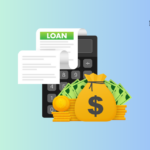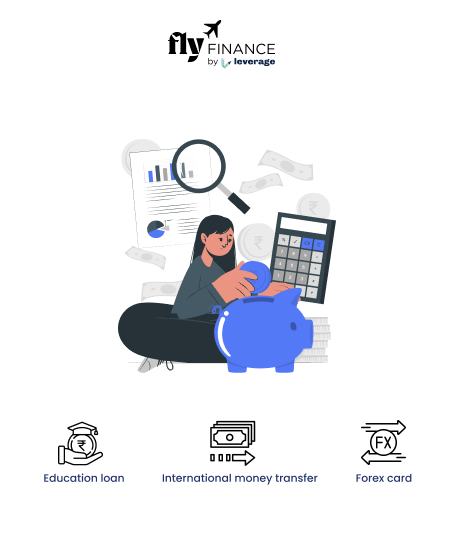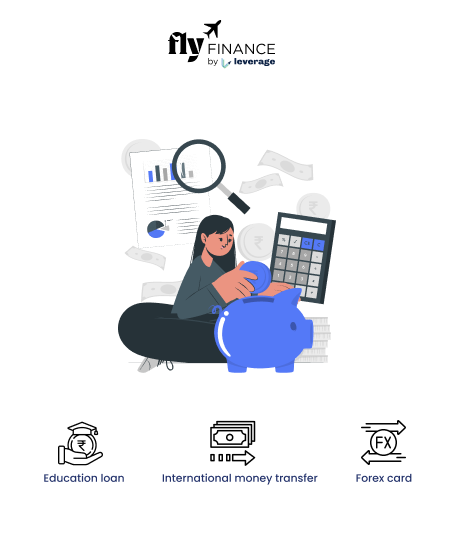Education loan refinancing is the process of replacing your current student loan with a new loan, typically offered at a lower interest rate. While repaying your education loan, it is important to understand how to handle the repayment when the interest rate rises.
By education loan refinancing, borrowers can consolidate multiple loans into a single monthly payment, often making it easier to manage debt. Refinancing is particularly appealing for those with high-interest private loans or those looking to save money over the life of the loan. Let’s understand how education loan refinancing can help you make your loan cheaper than the existing cost.
Table of contents
- What is Education Loan Refinancing?
- Benefits of Education Loan Refinancing
- Eligibility Criteria for Education Loan Refinancing
- How to Apply for Education Loan Refinance?
- List of Indian Banks Offering Easy Take-over Loans
- Education Loan Refinancing vs Consolidation
- Pros and Cons of Education Loan Refinancing
- FAQs
What is Education Loan Refinancing?
Education loan refinancing is when you take a fresh loan from the same or another bank or financial institution to get better interest rates and repayment structure. Let us understand education loan refinancing with an example; Let us suppose you have an existing education loan which you took with 14% interest. Due to the rise in interest rates, your loan is currently attracting a 16% interest rate. Here, another bank will offer you a loan refinancing or takeover loan at, say, a 13% interest rate. When you take this fresh loan, your new lender will pay the remaining loan amount to close the existing loan, and you will now be paying EMIs for the refinanced loan at a lower interest rate. In this entire process, you saved a 3% interest rate and got better repayment terms.
The process of education loan refinancing typically involves applying with a private lender that assesses your creditworthiness, income, and financial stability. Most of the education loans in India come with a floating rate of interest, which can make your loan costlier than it was in the beginning.
- For availing of the new or the takeover loan, your credit score must be good, i.e. above 650 or 70,0, subject to the terms and conditions of the new lender/bank. Various banks provide education loan refinancing with bad credit as well.
- You must calculate the entire repayment amount and compare it with the existing loan to figure out the best-suited offer for you.
- Try to negotiate with your new lender for easy repayment options and better EMIs.
Education Loan Refinancing for International Students
Education loan refinancing offers a practical solution for international students struggling with high-interest loans, fluctuating exchange rates, and overseas payment challenges. For international students, refinancing with lenders like Fly Finance can eliminate the hassle of sending payments abroad and reduce financial stress. Lenders such as Fly Finance offer no-cosigner loans tailored to international students.
International students can also refinance education loans, though options are more limited. Key requirements for education loan refinancing for international students include:
- Co-signer: Many lenders may require a specific country-based co-signer.
- Work Authorisation: Proof of employment or income
Also Read: Government Education Loans to Study in USA
Benefits of Education Loan Refinancing
Education loan refinancing is the best option in a rising interest rate environment. An education loan with a floating rate of interest is usually subject to revision after each quarter. Hence, you can always look for take-over loans with lower interest rates and affordable EMIs. Let’s check some of the benefits of education loan refinancing:
- Lower Interest Rates: Education loan refinancing allows you to secure a lower interest rate than the existing one, saving you money over the tenure of the loan. This will ultimately reduce your monthly EMI amount, and you will be able to manage your finances efficiently.
- Simplified Repayment: Refinancing can consolidate multiple loans into one, simplifying your repayment process and making it easier to keep track of payments. Also, you will have to make EMI payments collectively, which will increase the transparency in the repayment.
- Flexible Repayment Terms: You may have the option to choose a new repayment term, which can help align your loan payments with your financial goals and budget. You can even negotiate the date of auto-debit for EMI payments as per your requirement.
- Improved Credit Score: When you get your loan refinanced then it will reduce your monthly EMI amount, subject to the new terms and conditions. Hence, you will be able to make timely payments on a refinanced loan, and this will show a positive impact on your credit score.
- Release of Cosigner: If you had a cosigner on your original loan, refinancing can potentially release them from their obligations. This happens because now you might have a job with a good salary and the new lender will analyse your repaying capacity. However, this will be based on the terms and conditions provided by the new bank.
- Variable or Fixed Rates: You can often choose between variable and fixed interest rates, giving you flexibility in managing your loan. You can negotiate with your bank over the new interest rate and its category. Always ask for a fixed rate of interest if your lender is allowing you to do so.
- Potential Savings: Overall, refinancing can save you money by reducing the total interest you pay over the loan tenure. With education loan refinancing you will be able to close the loan comfortably and can plan for your upcoming goals like a car or a home.
Eligibility Criteria for Education Loan Refinancing
Every bank has its terms and conditions and eligibility criteria for refinancing education loans. However, there are certain things which will apply to most of the banks offering a takeover loan. Let’s check the basic eligibility criteria for education loan refinancing:
- The entire loan amount shall have been paid and no more disbursement shall be pending with the existing bank
- The loan repayment shall have been started and the payments of EMIs are regular in the books of the existing lender.
- The borrower should be a major (above 18 years of age) at the time of the loan takeover application
- The application must be a first-time loan takeover application.
Documents Required for Education Loan Refinancing
The document verification for education loan refinancing is a lengthy yet important step in the entire process. Submitting the right set of documents led to the bank/lender in smooth releasing of refinanced amount.
The brief list of documents required for education loan refinancing includes the following:
| Category | Documents Required |
|---|---|
| Loan-Related Documents | Current loan sanction letter. Loan repayment schedule and statement. Foreclosure letter or outstanding balance certificate from the existing lender. |
| Personal Identification | PAN card. Aadhaar card, passport, or voter ID. |
| Financial Documents | Latest salary slips (for salaried individuals). Income tax returns (ITRs) or Form 16 (past 2–3 years). Bank statements (6–12 months). |
| Academic Records | Mark sheets and certificates of the course for which the loan was taken. Admission letter or proof of enrollment. |
| Employment Proof (if applicable) | Offer letter or appointment letter. Employment ID or proof of employment continuity. |
Also Read: Inflation and Its Effects on Education Loan
How to Apply for Education Loan Refinance?
Looks like you have finally decided to get your education loan refinanced, hence making it cheaper. So here are some easy steps which you need to follow if you want to apply for education loan refinance in a quick time:
- Request your existing lender for a foreclosure application form and check the exact foreclosure amount which you need to pay, along with early repayment charges on education loan.
- Approach a new bank offering an easy take-over loan or loan refinancing, and check all their terms and conditions and rate of interest.
- Apply for a take-over loan with the new bank and complete the foreclosure process with the existing lender/bank.
- The new bank will take some time for the paperwork, as they have to pay the foreclosure amount to the existing lender.
- Check all the details of the new loan properly, like EMI amount and date, overall loan cost, etc.
Note: Always compare the total repayment amount offered by both the bank/lender which you are going to pay against your education loan.
List of Indian Banks Offering Easy Take-over Loans
There are a lot of government banks in India that offer easy loan refinancing or take-over loans for students. Check a list of some of the best banks with attractive interest rates on take-over loans:
| Name of the Bank | Maximum Repayment Period | Rate of Interest |
| State Bank of India (SBI) | Up to 15 years | Starting from 9.15%- 11.51% p.a. |
| HDFC Bank | Up to 15 years | (CBLR + Spread)% per annumCurrent CBLR- 11.00%- 13.55% |
| IDFC First Bank | Up to 12-15 years | 10.75%- 13.00% p.a |
Note: The interest rate keeps changing from time to time. Contact your bank for the best offer on the date when you are applying for an education loan refinancing.
Education Loan Refinancing vs Consolidation
While refinancing and consolidation may sound similar, they have distinct differences. Choosing between education loan refinancing or consolidation depends on your goals. Refinancing is ideal for lowering costs, while consolidation simplifies federal loan payments.
Let us see more differences between refinancing and consolidation in the table given below:
| Feature | Refinancing | Consolidation |
|---|---|---|
| Purpose | Lower interest rates, save money | Combine federal loans |
| Eligibility | Credit-based, includes private loans | Federal loans only |
| Lender | Private lenders | Department of Education |
| Interest Rates | Variable or fixed, based on credit | Weighted average of existing rates |
Pros and Cons of Education Loan Refinancing
Checking the pros and cons of education loan refinancing is essential to make an informed choice that aligns with your goals and circumstances. There are several benefits of education loan refinancing but there are drawbacks as well.
Checking the following pros and cons of loan refinancing will empower you to make a well-informed decision, ensuring the refinancing option aligns with both your immediate needs and long-term financial objectives:
Pros of Education Loan Refinancing:
- Lower interest rates save money.
- Simplifies repayment by combining multiple loans.
- Offers flexible terms tailored to your needs.
Cons of Education Loan Refinancing:
- Federal loan benefits, such as forgiveness programs, may be lost.
- Requires good credit and stable income.
- Not all lenders offer flexible repayment plans
Top Mistakes to Avoid During Education Loan Refinancing
Refinancing an education loan can offer significant benefits if done correctly. There are common mistakes that people make during the process that can negatively impact their finances. By avoiding these common mistakes, you can ensure that you make an informed decision that aligns with your financial goals.
The table given below summarises the key mistakes made while education loan refinancing, their explanations, and the solutions to help avoid them during the refinancing process.
| Mistake | Explanation | Try finding the best education loan refinancing rates and lenders. Shop around and compare offers from multiple lenders, reviewing both interest rates and any associated fees. |
|---|---|---|
| Not Understanding the Impact on Loan Forgiveness Programs | Refinancing federal loans into private loans may cause you to lose eligibility for loan forgiveness programs. | Research whether loan forgiveness programs are tied to federal loans and consider keeping them federal if eligible. |
| Refinancing Without Shopping Around for the Best Rates | Borrowers often refinance with the first lender they find without comparing rates, terms, or fees. | Try finding best education loan refinancing rates and lenders. Shop around and compare offers from multiple lenders, reviewing both interest rates and any associated fees. |
| Choosing a Loan Term That Doesn’t Match Your Financial Goals | A longer term may lower monthly payments but increase the total interest paid, while a shorter term may strain your budget. | Choose a loan term that balances monthly payments with long-term financial goals. |
| Refinancing When Your Credit Score is Too Low | Refinancing with a poor credit score could result in higher interest rates or even loan denial. | Check your credit score and improve it before refinancing if necessary. |
| Ignoring the Total Loan Repayment Amount | Focusing solely on lowering monthly payments can overlook the total amount paid over the loan’s lifetime. | Consider both the monthly payment and the total repayment amount, including interest, over the life of the loan. |
| Not Considering the Loan’s Variable vs Fixed Interest Rates | A variable interest rate may start lower but could increase, resulting in higher long-term costs. | Choose a fixed rate if you want stability, or a variable rate if you’re comfortable with some risk for potentially lower initial rates. |
| Overlooking Lender Fees and Other Costs | Refinancing may come with origination fees, application fees, or prepayment penalties that increase overall costs. | Review the lender’s fee structure to ensure the refinancing savings outweigh any fees or costs. |
| Failing to Check for Prepayment Penalties | Some loans have prepayment penalties that can negate the benefit of paying off the loan early. | Check for prepayment penalties before refinancing and opt for a loan without them if you plan on paying off the loan early. |
| Refinancing Too Early or Too Late | Refinancing too early, when rates are high, or too late, when potential savings have diminished, can lead to missed opportunities. | Try finding best time to apply for refinance education loan. Refinance when interest rates are low or when your credit score has improved, and avoid refinancing when the benefits are minimal. |
| Not Fully Understanding the Loan Terms | Not fully understanding the refinancing terms can lead to surprises in interest rates, payment structures, or other conditions. | Carefully read the loan agreement and ask the lender for clarification on any unclear terms before committing. |
| Assuming Refinancing Will Solve All Financial Problems | Refinancing can reduce payments but does not address the root causes of financial issues like overspending or debt accumulation. | Pair refinancing with good financial habits, such as budgeting and saving, to ensure long-term financial health. |
FAQs
Education loan refinancing involves replacing your existing loan with a new one from another lender, often at a lower interest rate. This helps reduce EMIs, save money, and improve repayment terms.
Education loan refinancing is a good option to make your existing loan cheaper. You can get a low-interest rate, an easy repayment structure and other benefits by getting a loan refinance option.
Choosing a bank for education loan refinancing depends on your requirements. In India, SBI offers easy options for refinancing. However, always check and compare the terms and conditions of multiple lenders.
A loan takeover is the same as a loan refinancing or balance transfer. In this process, you close a loan with the existing lender by paying them the foreclosure amount, which you get from a new lender with a better rate of interest and repayment policies.
Your new lender pays off the balance of your current loan, and you start repaying the new loan under revised terms. It’s beneficial if the new loan offers lower rates or better terms.
Students can benefit from lower interest rates, flexible repayment terms, and simplified loan management. It’s especially useful in a high-interest rate environment.
Yes, international students can refinance, though options are limited. Lenders may require a co-signer or proof of stable income in the refinancing country.
Refinancing offers lower interest rates, simplified repayment through consolidation, flexible terms, and the potential to release a co-signer. It can also improve your credit score with timely payments.
Refinancing may cause loss of federal loan benefits, require good credit, and involve fees or penalties. Variable rates can also increase long-term costs.
Eligibility depends on your credit score, income, and repayment history. Typically, you must have started repaying your loan and maintained regular EMI payments.
Refinancing lowers interest rates and can include private loans, while consolidation combines federal loans for simplified repayment. Refinancing is credit-based, but consolidation isn’t.
Yes, refinancing can consolidate multiple loans into one, simplifying repayment. This makes managing payments easier and increases transparency.
Check eligibility, interest rates, repayment terms, and potential fees. Ensure the new loan aligns with your financial goals and offers significant savings.
Loan refinancing is a smart choice for students who have started repaying their education loans. You have the option to make your loan cheap, thus helping you to manage your financial planning accordingly.
To know more about education loan refinancing, the best international bank accounts for students, forex and banking experience for global students or international money transfers, reach out to our experts at 1800572126 to help ease your study abroad experience.
Follow Us on Social Media





























